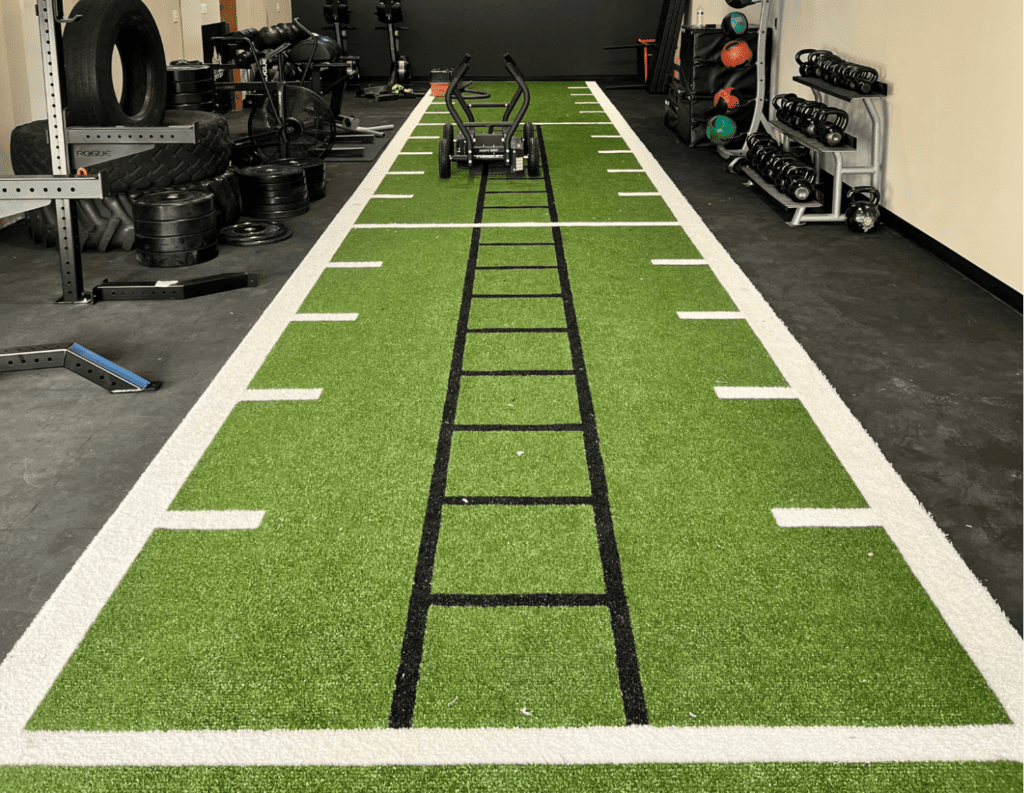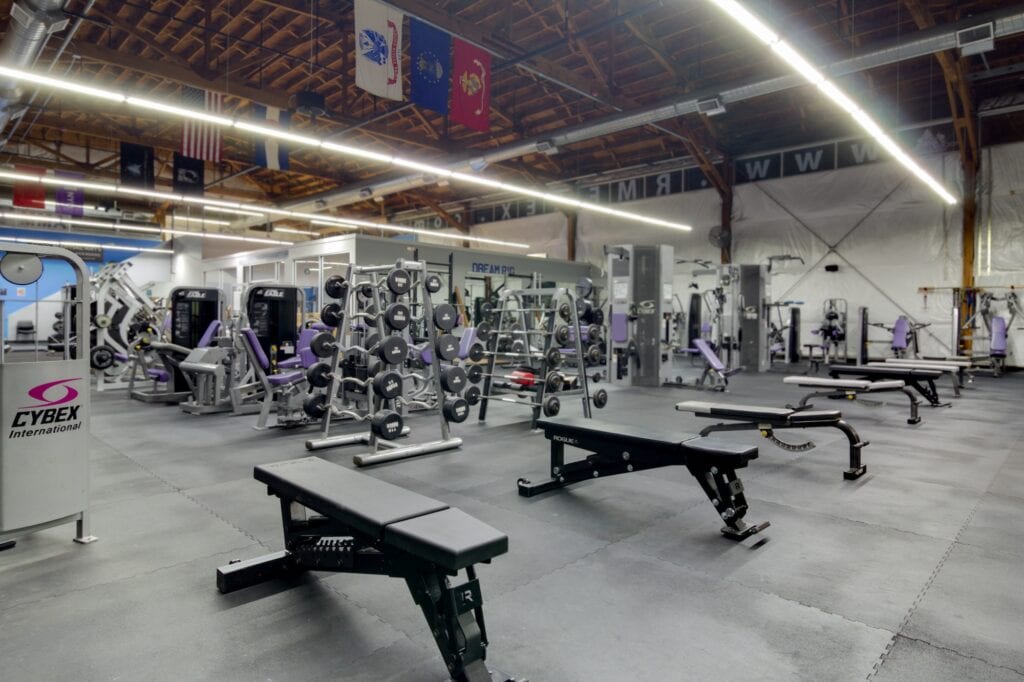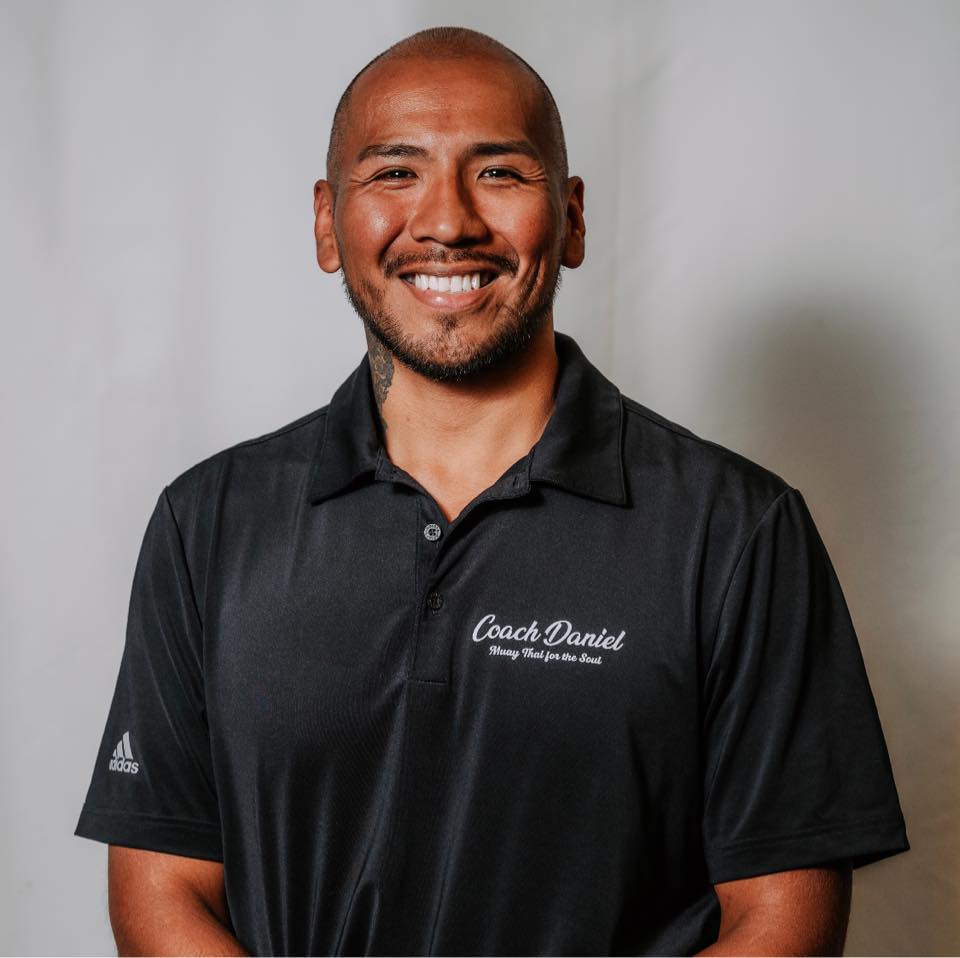We’re thrilled to have Rocky Mountain Flex Personal Trainer Luke Rowe share his top ski-conditioning exercises now that ski and snowboard season has officially opened. With Denver just a couple of hours away from some of the country’s best ski resorts (okay, maybe a bit more with the I-70 traffic we all love), getting slope-ready is key to making the most of the winter season. We hope you enjoy this informative post as much as we did and encourage you to share it with anyone who could benefit from the foundational and advanced exercises Luke has shared with us today.
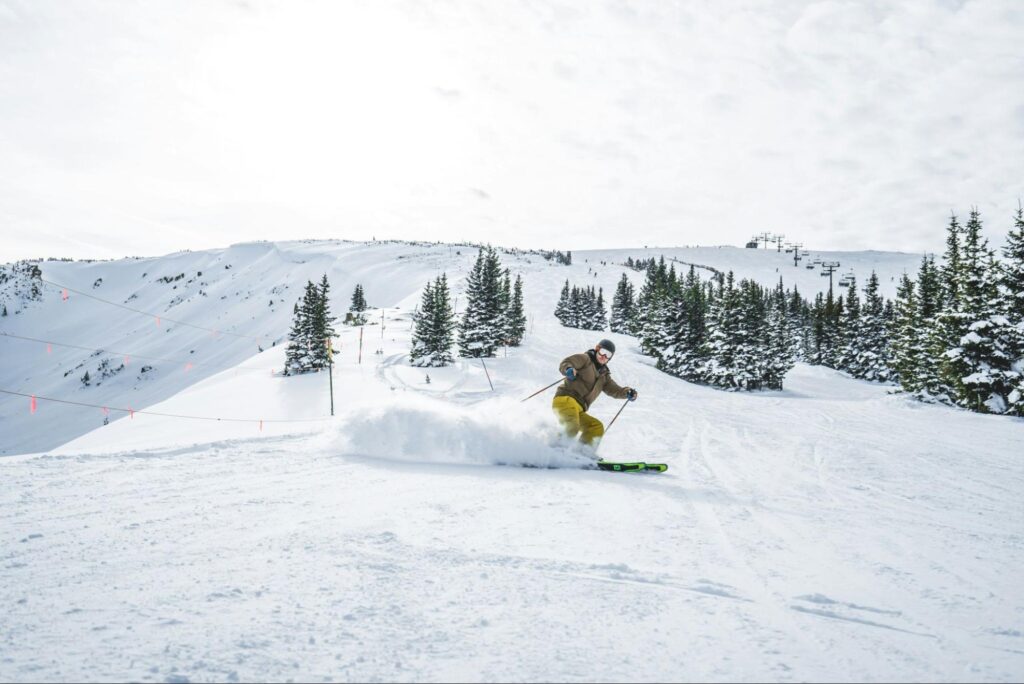
As the snow season approaches, hitting the slopes becomes a top priority for many families in our community. Over the past 10 weeks, I’ve had the opportunity to train the kids of the Ski & Snowboard Club of Vail for dryland conditioning. When training youth, it’s critical to first provide a safe, fun, and engaging environment, and I want to thank the staff and members for helping create that space. It’s been fantastic seeing these kids progress from foundational exercises to more advanced ski-specific conditioning for their upcoming season.
This blog post will give you a peek into some of the top foundational exercises we’ve worked on in class and introduce FlexFlow’s advanced performance exercises designed to boost agility, balance, and strength for even the most seasoned skiers. Whether you’re a beginner or looking to elevate your skiing skills, these exercises will ensure you’re prepared for the mountains!
The Benefits of Ski-Specific Training
Skiing demands a unique blend of physical skills, including strength, endurance, balance, agility, coordination, awareness, and reaction time. Our ski class focuses on building these essential attributes to ensure a safe, enjoyable experience on the slopes. Here are a few key benefits of ski-specific training for both kids and adults:
- Improved Coordination and Balance – Essential for managing tricky terrains and quick movements on skis.
- Strength and Stability – Building up ankle, knee, and hip stability is crucial for protecting joints, especially the knees, and reducing injury risk.
- Enhanced Endurance – Boosts stamina, allowing you to enjoy longer days on the slopes without tiring easily.
By practicing these exercises, both parents and kids will develop skills that make skiing safer and more enjoyable!
FlexFlow’s Top 5 Foundational Ski Exercises for Kids and Parents
These foundational moves are a great place to start, especially if you’re just getting into skiing or want to ensure everyone in the family has solid strength and balance for a safe season.
1. Single-Leg Balance Holds
- Why: Enhances balance and stability, crucial for handling uneven terrain.
- How: Stand on one leg, holding for 30 seconds before switching. Add a slight knee bend to ensure you using your stabilizing muscles and not locking out the joint, use your toes and the intrinsic muscles of your foot
Tip: Make it more challenging by turning your head, closing your eyes, or standing on an unstable surface.
2. Plank Variations
- Why: Builds core stability, aiding in balance and movement control on skis.
- How: Start with a basic plank (hands and elbows), then side planks or add shoulder taps for more intensity.
Variations: Mix in mountain climbers, bear stance, or bear crawls (forward, backward, and lateral) for variety and core engagement.
3. Wall Sit with Band
- Why: Strengthens glutes, hamstrings, quads, inner thighs and hips, which help maintain stability during turns.
- How: Hold a wall sit position with a resistance band around the thighs, pushing the knees outward for added hip activation. Aim for 1:30s
Variation: Lift your heels off the ground
4. Single-Leg Box Squats
- Why: Builds unilateral leg strength and balance for controlled movement on the slopes.
- How: Lower into a single-leg squat with a box (around 20’’ high) behind you for support, maintaining optimal posture. Perform 3 sets of 8–10 reps per leg.
Tip: This is a key exercise for foundational strength and stability
5. Alternating Lateral Lunges
- Why: Enhances lateral leg strength and power, vital for skiing.
- How: Step to the side into a lunge, keeping the opposite leg straight, heel and toe on the ground, upright posture, Alternate sides for 3 sets of 10 reps.
Tip: Kids can make this a friendly competition by timing their lunges or playing catch!
Bonus: Push-Ups (these will never go away for anything)
- Why: Enhances lateral leg strength and power, vital for skiing.
- How: Step to the side into a lunge, keeping the opposite leg straight, heel and toe on the ground, upright posture, Alternate sides for 3 sets of 10 reps.
Tip: Kids can make this a friendly competition by timing their lunges or playing catch!
FlexFlow’s Top 5 Advanced Ski Performance Exercises
For those looking to take their skiing skills to the next level, these advanced exercises add intensity to your training. They’re ideal for experienced skiers wanting to maximize performance and reduce injury risk.
1. Single-Leg Bosu Balance

- Why: Engages core, hip complex, and hamstrings for power in turns.
- How: Balance on one leg on a Bosu ball, holding for 20-30 seconds. Switch legs. Perform 3 rounds.
Tip: Add head turns, Single-leg RDLs, dynamic movements, and weights for an extra challenge and strength.
2. Standing Hydrants


- Why: Enhances hip mobility and lateral control for fast turns.
- How: From a standing position, band right about knees, lift one leg out to the side, engaging the hip. Aim for 2 sets of 12–15 reps per leg.
Tip: Add head turns, Single-leg RDLs, dynamic movements, and weights for an extra challenge and strength.
3. Single-Leg Romanian Deadlifts with Pallof Press


- Why: Multiplanar, builds core and hamstring strength, and improves balance.
- How: Stand on one leg, hold a weight in the opposite hand, and hinge forward. Add a Pallof press (pressing a cable/band away from your body) for core engagement. Perform 3 sets of 10 reps per side.
Note: This helps with balance during turns and landing jumps.
4. Single-Leg Bent-Over Barbell Row with Swiss Ball

- Why: Improves strength and stability through the core, hip, and upper back.
- How: With one leg extended behind, row a barbell or dumbbell, using a Swiss ball for an added balance challenge. Perform 3 sets of 8–10 reps per side.
Tip: This move refines core stability and balance. Keep hips square to the ground.
5. Foam Roller Hamstring Walkouts
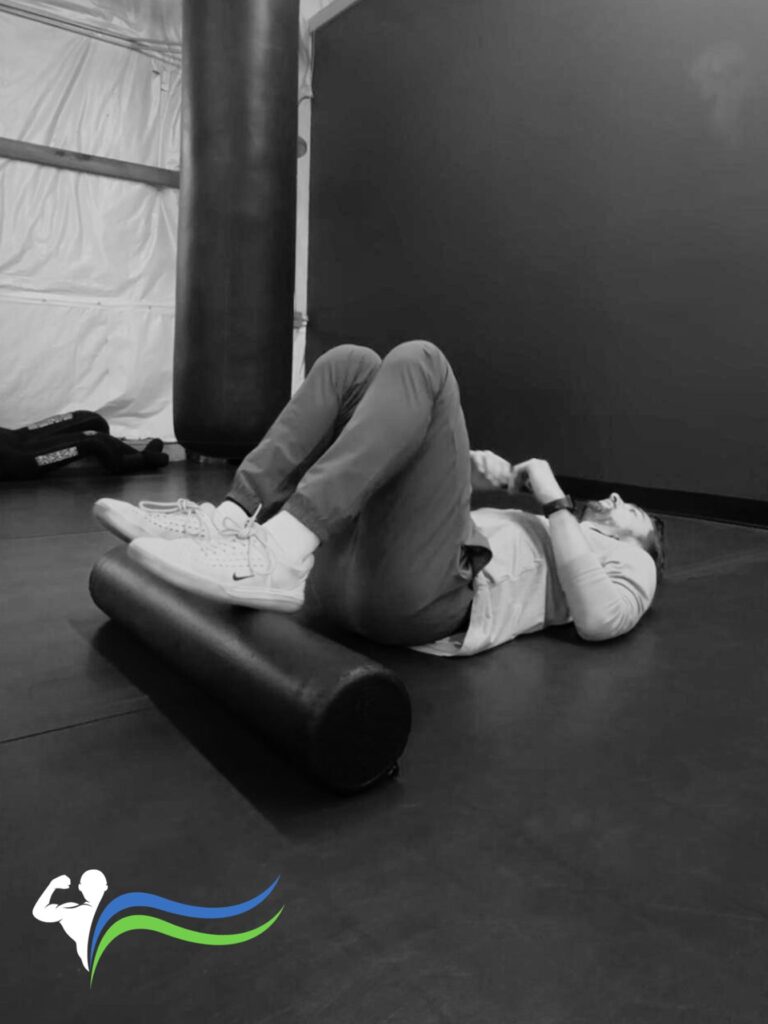

- Why: Strengthens lower posterior chain with an emphasis on isometric and eccentric control.
- How: First rotate your pelvis up and forward, bridge up with feet on a foam roller, Walk/step feet out on a foam roller as far as you can, keeping the core tight, then walk/step back. Complete 2 sets of 10–15 reps.
Tip: Keep glutes engaged, Eccentric; 4-second walkout, 2-second walk-in, inhale walkout, exhale walk-in.
Closing Tips
Preparing for ski season isn’t just about building strength—it’s also about developing control, endurance, and resilience. These exercises can be incorporated into your current workout routine, making them accessible for all fitness levels.
Whether you’re aiming for a fun family ski trip or looking to improve your competitive edge, these foundational and advanced exercises will help ensure you’re ready for anything the slopes throw your way.
If you’re looking for personalized guidance to get ready for the slopes, don’t hesitate to reach out. Contact me at 315-254-7823 or visit my website flexflowbylukerowe.com, I’d love to help you reach your peak potential and enhance your quality of life!
AUTHOR
Luke Rowe
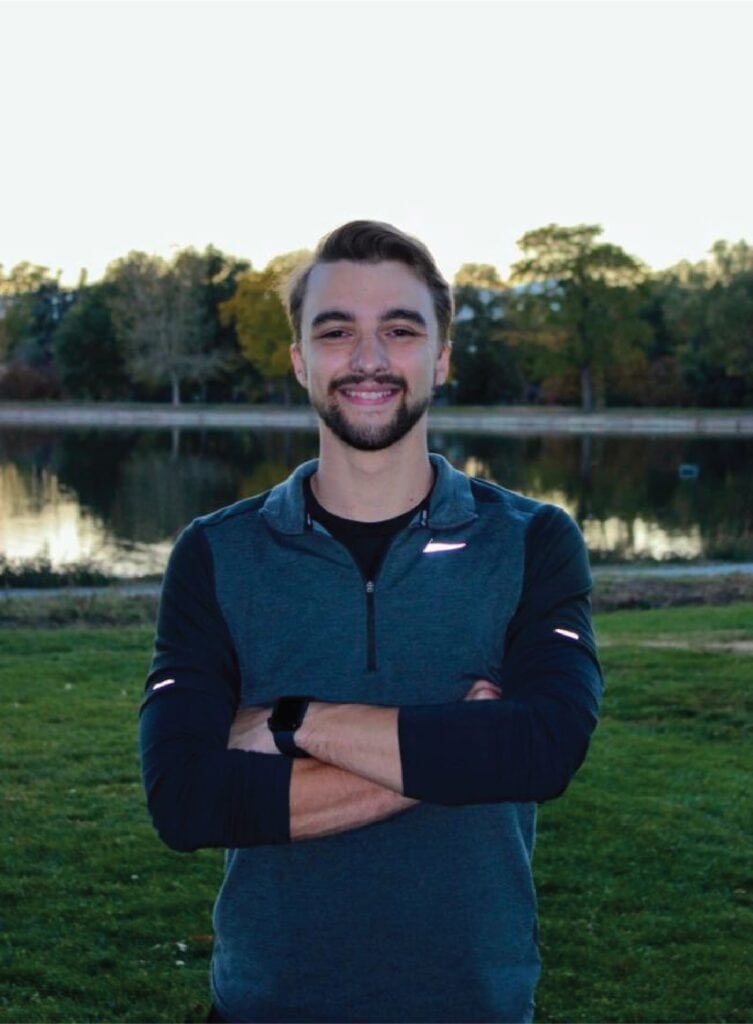
Luke Rowe is a dedicated personal trainer with a passion for helping clients achieve sustainable, long-term fitness transformations. With a holistic approach to training, Lucas combines state-of-the-art hypertrophy techniques, precise nutrition strategies, and self-development practices to create results that are as lasting as they are impactful. His journey began with a lifelong love for sports like wrestling, baseball, football, and golf, but a life-changing injury showed him the power of fitness to heal and transform not only bodies but entire lives.
With a B.S. in Health Science from Florida Gulf Coast University and certifications from the National Academy of Sports Medicine (NASM) as a Certified Personal Trainer, Sports Nutrition Coach, and Corrective Exercise Specialist, Lucas brings both expertise and empathy to his training approach. His philosophy goes beyond traditional fitness, emphasizing client-centered strategies that help individuals overcome challenges, redefine limits, and experience lasting joy and balance.






